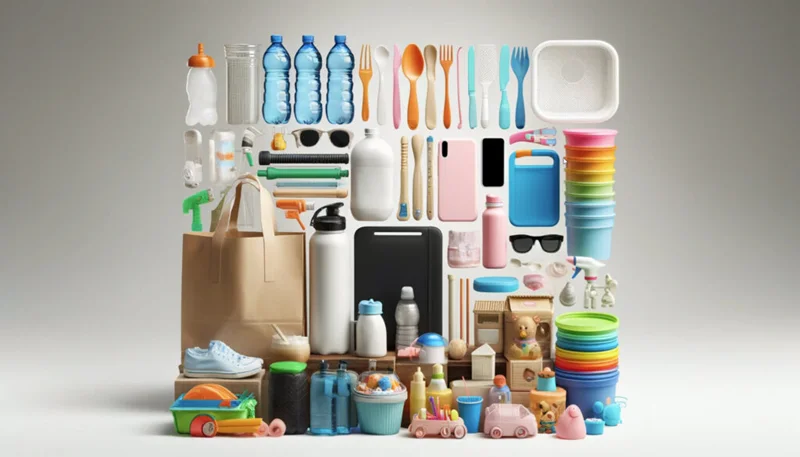This is a great idea for a blog post! Linking the global "polymer money" trend (polymer banknotes) to the commercial polymer market (like PET preforms and shrink wrap film) creates a unique and relevant piece for an SEO-optimized website focused on polymers, packaging, or financial trends.
Here is the draft for your blog post:
💰 The Global Polymer Surge: From Banknotes to Bottles—Tracking the Polymer Money Rate and Market Trends in 2025
🌍 The Rise of "Polymer Money" and its Industrial Ripple Effect
The world of currency is changing, with over 70 countries now issuing polymer banknotes. What started in Australia in 1988 has become a global standard for durability, security, and cleanliness. But this financial trend is just one part of a much larger, dynamic polymer market that influences nearly every industry, from currency printing to product packaging.
The "polymer money rate" isn't a traditional financial exchange rate, but a key indicator of polymer's increasing importance and cost-effectiveness. The same material science that makes banknotes last longer is driving innovation and price shifts in commercial plastics like PET preforms and shrink wrap film.
📈 Decoding the Global Polymer Market in 2025
The overall plastics market is projected to continue its growth trajectory, with the global market size valued at over $533 billion in 2025. This growth is heavily influenced by factors like:
- Sustainability Demands: The push for the Circular Economy is driving demand for recycled polymers (rPET), which is expected to see rapid growth.
- Automotive & Construction: Increasing use of lightweight, durable polymers to replace metal in vehicles and construction components.
- Geopolitics & Tariffs: Trade tensions and tariffs are continuously reshaping supply chains and regional pricing structures.
1. PET Preform Pricing Trends: The Packaging Powerhouse
The PET preform is the fundamental building block for plastic bottles, especially in the booming beverage sector (water, soft drinks). Asia-Pacific remains the largest and fastest-growing market, driven by urbanization and rising consumption.
| Region (September 2025) | PET Price (USD/Kg) | Q3 2025 Price Movement | Key Trend |
| North America | $1.44 | 5.6% ↑ Up (Strong demand) | Robust demand from peak-season bottling. |
| Europe | $1.27 | 8.1% ↓ Down (Sharp Decline) | Oversupply, low seasonal demand, and competitive imports. |
| Northeast Asia | $0.85 | 3.3% ↓ Down (Decline) | Muted buying interest and oversupply conditions. |
| India | $1.27 | 4.5% ↑ Up (Rise) | Heightened seasonal orders and inventory replenishment. |
Export to Sheets
Analyst Insight: While the market size for PET preforms is projected to exceed $23 billion in 2025, volatile raw material costs (PTA and MEG) and the increasing premium on rPET (often 15-20% higher than virgin PET) are putting pressure on converter margins globally. The shift to mandatory recycled content in many regions is a key driver for long-term growth in the rPET segment.
2. Label Shrink Wrap Film Analysis: Branding and Protection
Shrink wrap film and shrink sleeve labels are crucial for product security, branding, and packaging, with the global market expected to reach $17.68 billion in 2025. These films wrap everything from multipacks of beverages to tamper-evident bands on pharmaceuticals.
- Growth Drivers: The market is expanding at a steady 5-6% CAGR, fueled by the rising demand for attractive, full-body packaging that provides maximum shelf appeal and anti-counterfeiting features.
- Regional Dominance: Asia-Pacific holds the largest market share, with North America and Europe also showing significant growth, particularly in the food, beverage, and pharmaceutical sectors.
- Material Shift: While Polyvinyl Chloride (PVC) and PETG (Polyethylene Terephthalate Glycol-modified) dominate, the industry is seeing a rapid increase in eco-friendly alternatives like Polylactic Acid (PLA) and recyclable PE-based films, a direct response to global plastic waste concerns.
💡 Why All These Polymer Trends Matter
The connection between polymer money, PET preforms, and shrink wrap film is clear: Polymers are central to the modern global economy.
- Cost-Efficiency and Durability: Polymer banknotes last up to 2.5 to 4 times longer than paper ones, offering central banks significant long-term cost savings, despite a higher initial printing cost. This same desire for durability and efficiency drives companies to choose specific polymers for packaging, reducing material use (lightweighting) and minimizing product loss.
- Security and Branding: Just as security features in polymer notes prevent counterfeiting, advanced printing and film technology on shrink wrap film offers brand owners powerful, tamper-evident solutions that protect consumers and product integrity.
- The Sustainability Mandate: The massive global polymer market is increasingly being reshaped by the demand for circularity. The success of rPET adoption in PET preforms and the development of recyclable label shrink wrap film are critical indicators of how fast the industry can adapt to environmental regulations and consumer pressure.
As we move through 2025, the polymer market is characterized by a mix of price volatility, driven by supply chain pressures and fluctuating feedstock costs, and strong underlying growth, fueled by innovation and the undeniable demand for durable, flexible, and increasingly sustainable plastic solutions.



دیدگاه خود را بنویسید